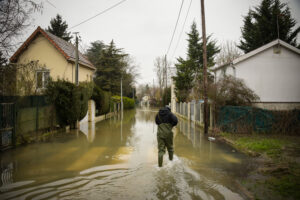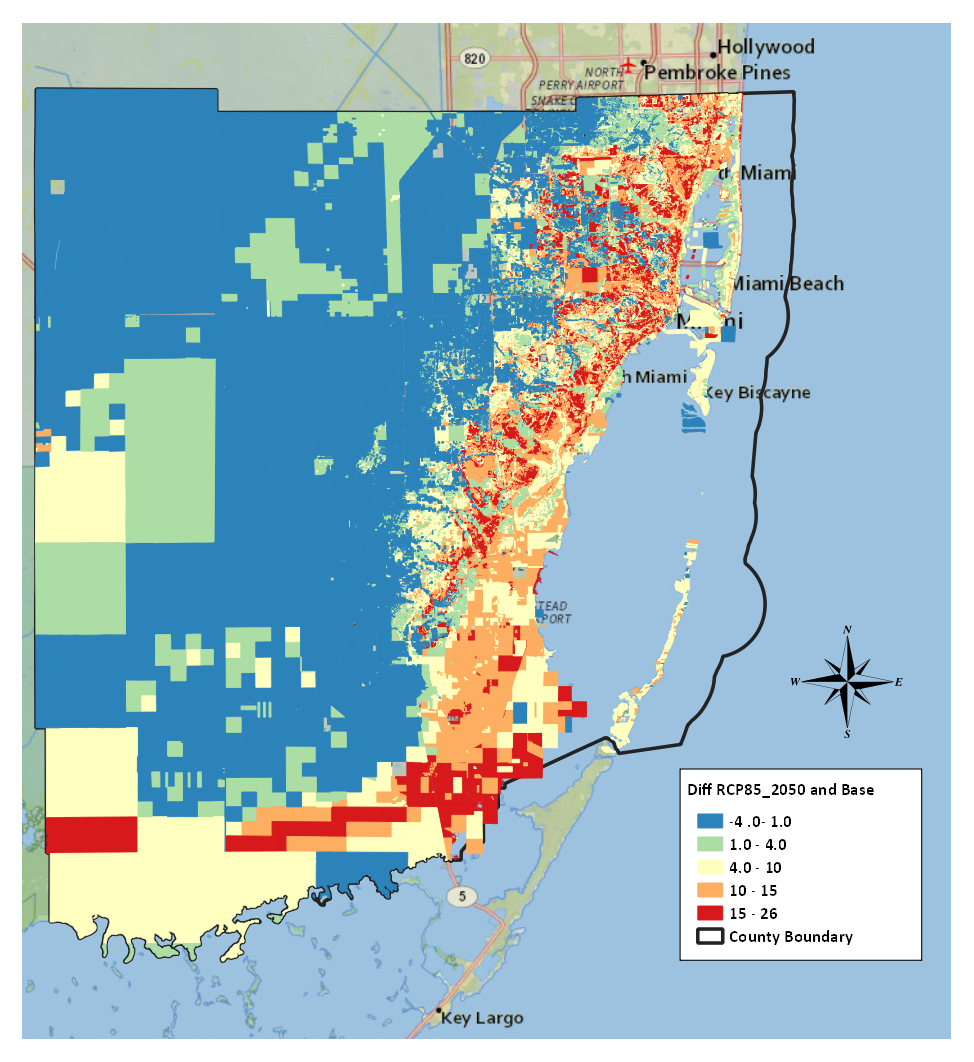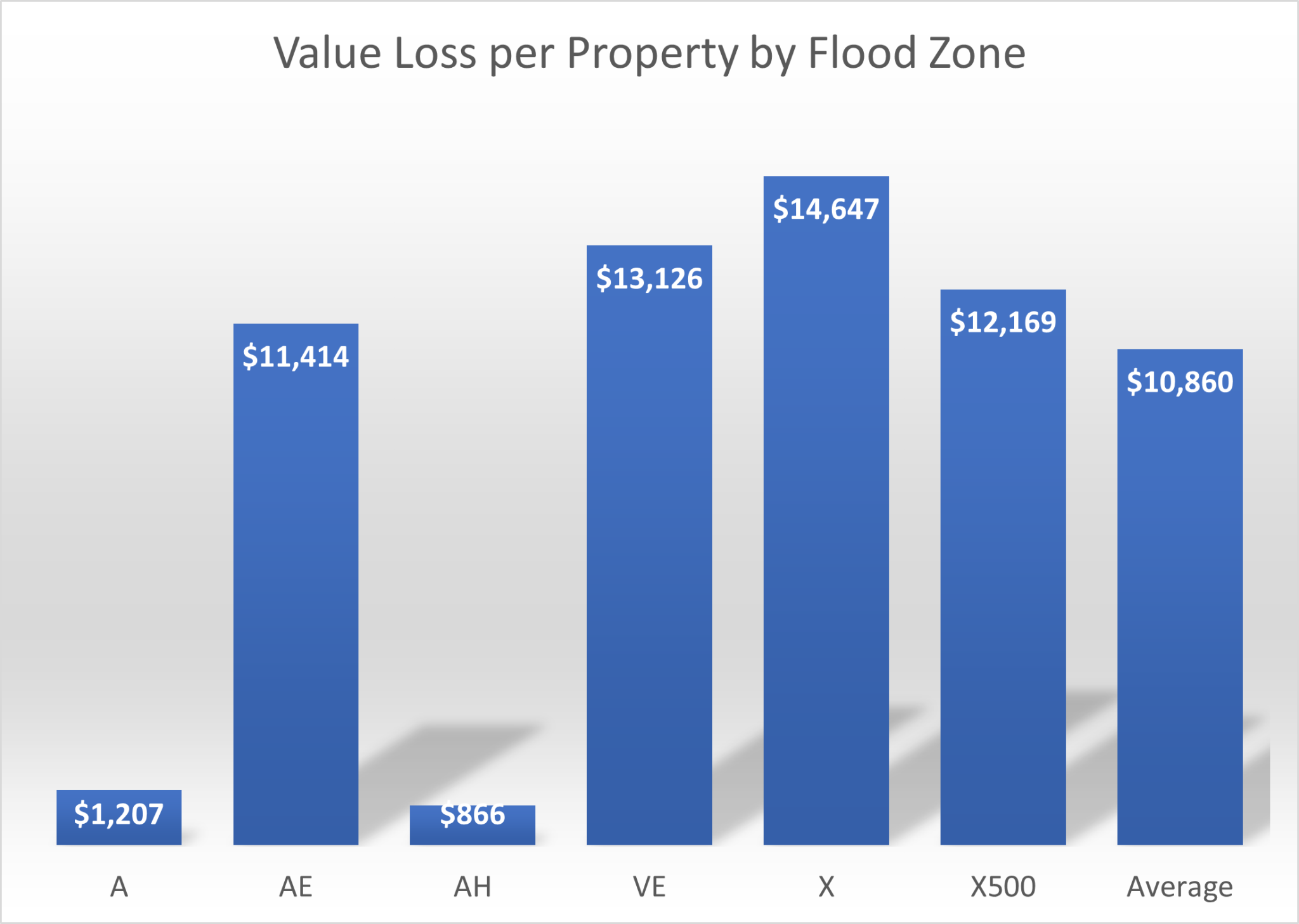 Acknowledging the very real and present danger of a warming planet, CoreLogic has released new research taking into account rising sea levels, the frequency of intense storms, and the amount of flooding caused by storms in the Miami area by 2050.
Acknowledging the very real and present danger of a warming planet, CoreLogic has released new research taking into account rising sea levels, the frequency of intense storms, and the amount of flooding caused by storms in the Miami area by 2050.
Under the guise of a worst-case scenario, the Miami area is projected to see a sea level rise of 1.5 feet by 2050—this margin could prove to be huge as the average sea level of Miami is around 6 feet and is predicted to cost Miami homeowners $7.9 billion in value.
Noting previous research, CoreLogic found that buyers are increasingly becoming aware of flooding risk as evidenced by home price drops in high-risk areas.
To mitigate climate risks in the future, CoreLogic has developed an algorithm by using scenarios created by the Intergovernmental Panel on Climate Change (IPCC) to provide a comprehensive framework for exploring the potential impacts of climate change on properties. This algorithm assigns a composite flood risk score for properties based on flood and storm surge risk.

Applying a “stressed” climate score of 8.5 to properties negatively affects property values. Under this scenario, the planet is expected to warm by 4.5 to 5.5 degrees Celsius compared to pre-industrial revolutionary numbers by the end of the century. This poses a serious composite risk for flooding in particular.
As it stands, it is crucial to clearly understand the potential impact of climate change on property values and to implement strategies to mitigate the risk and safeguard property values.
“In this analysis, properties located outside of the existing 100-year flood zones are particularly vulnerable to the effects of sea level rise, experiencing an average property value loss of 2.8%. Properties located in 500-year flood zone also suffer a significant property value loss of 2.3%. Flood zones AE and VE will have a high loss of 1.74% and 1.56%, respectively,” CoreLogic said. “Our analysis estimates that all residential properties in Miami, valued at over $387 billion, will experience a loss of $7.9 billion under the 8.5 scenario. Moreover, it is estimated that 70% of this loss will be from 25% of the properties.”

In Miami, there are approximately 730,000 residential properties. According to Figure 3, the average loss per property under the RCP8.5, a severe climate scenario, is estimated to be $10,860. Properties situated outside of the 100-year floodplain, Zone X and X500, are likely to experience higher losses of $14,647 and $12,169 per property, respectively. This is partially due to the fact that homeowners may not be aware of the looming risk since their knowledge is based on experience. Moreover, Zone AE and VE properties will have high losses of $11,414 and $13,126, respectively, due to their proximity to the water, which commands a higher home price, making them more vulnerable to the impacts of sea level rise.
In conclusion, CoreLogic’s Climate Risk Analytics provides a starting point for understanding and mitigating the risks associated with climate change under various scenarios. These insights provide actionable data for public officials, homeowners, lenders, and insurers to expand knowledge on future climate risks.

 DSNews The homepage of the servicing industry
DSNews The homepage of the servicing industry









